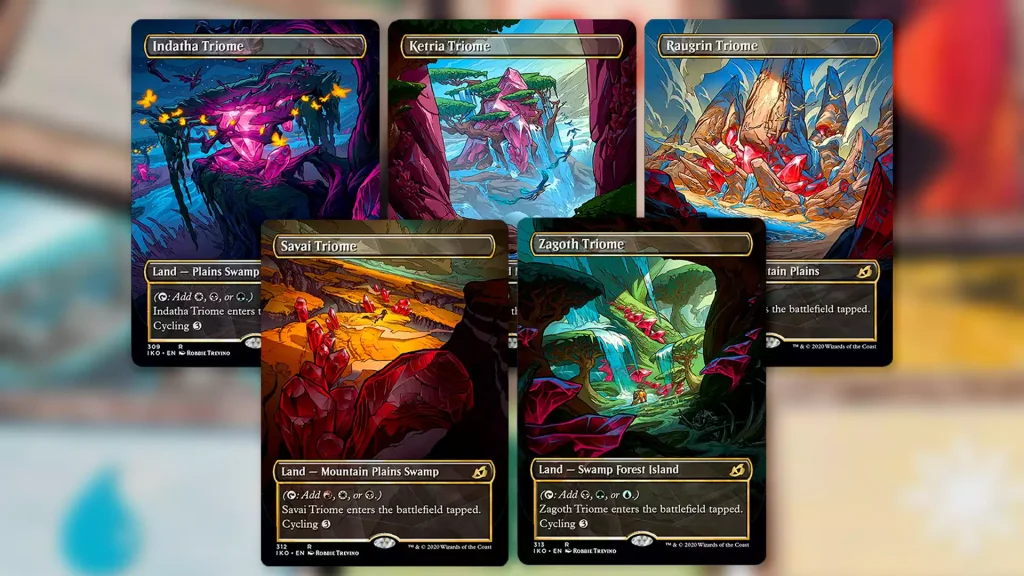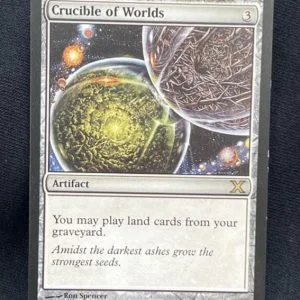Tri lands in Magic: The Gathering (MTG) are nonbasic lands that can produce mana in three different colors. They are important for decks that want to play multiple colors, such as three-color or even five-color strategies. When building a deck, having access to all the needed colors at the right moment can make the difference between winning or losing. Tri lands help reduce the risk of color screw—when you can’t cast your spells because you lack the right colors of mana.
In this article, we’ll look at the different types of tri lands, including Triomes, original tri-lands, Panorama lands, Lair lands, Invasion tri-lands, and a few unique cards that don’t fit into a single cycle. We’ll also talk about strategic considerations like mana fixing, tempo, fetchability, and cycling. By understanding these details, you can make better decisions about which tri lands to include in your MTG deck.
Pick up a set of our high quality Triome proxies here.
What Are Tri Lands?
Tri lands are lands that tap for three colors of mana. They often enter the battlefield tapped, although some can enter untapped under specific conditions. They come with different abilities that either help with mana fixing or cost you something in return—like returning a land to your owner’s hand, paying life, or sacrificing the land for extra mana.
You’ll see tri lands referred to in various sets, starting as early as the Invasion block and continuing into recent sets like Ikoria: Lair of Behemoths. When Wizards of the Coast prints new lands, they often try to balance power by adding downsides, such as entering tapped or requiring an additional cost. But the benefit of producing three colors can outweigh these drawbacks, especially if your deck is built to take advantage of them.
Types of Tri Lands
1. Triomes (Tricycle Lands)
Triomes, also called tricycle lands, were introduced in Ikoria: Lair of Behemoths and completed in Streets of New Capenna. They each have three basic land types—like Forest, Island, and Swamp—printed on them. This means they are fetchable with fetch lands such as Misty Rainforest or Marsh Flats. The fact that these tri lands have basic land types is key to their power. They always enter tapped, but you can cycle each Triome for three generic mana if you don’t need extra lands later in the game.
Triomes are an excellent mana fixing option for three-color decks, and they can even help in five-color decks because they provide multiple colors with a single land drop. The presence of basic land types also works well with cards that care about specific land types, like cards that say “search your library for a Forest.” Triomes are some of the most flexible tri lands Wizards has created. They appear in sets like Ikoria and New Capenna, but we might see similar designs in the future as they have proven quite popular among players.
Examples:
- Ketria Triome (Forest/Island/Mountain)
- Raffine’s Tower (Plains/Island/Swamp)
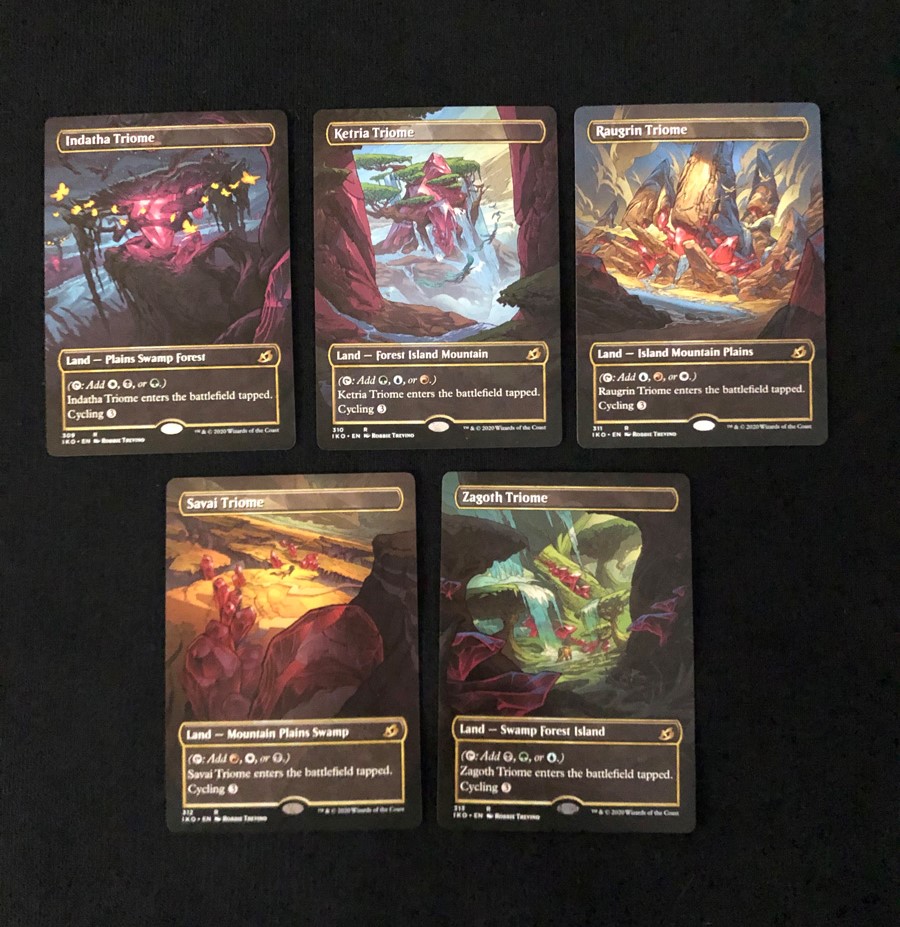
2. Original Tri-Lands
Long before Triomes, the original tri-lands appeared in Shards of Alara. These included cards like Arcane Sanctum (taps for white, blue, or black) and Crumbling Necropolis (taps for blue, black, or red). They enter the battlefield tapped and do not have basic land types, so they aren’t fetchable with standard fetch lands. A second wave of similar tri-lands showed up in Khans of Tarkir, such as Nomad Outpost (taps for red, white, or black).
Although these lands lack some of the advanced features of Triomes (no cycling, no basic land types), they still see play in casual and Commander decks. They do a great job at providing three colors of mana and help fix colors early in the game. For many players, these tri-lands are a budget-friendly option if Triomes aren’t in your price range. If you’re just getting into multicolor decks, these can serve as a straightforward way to get started.
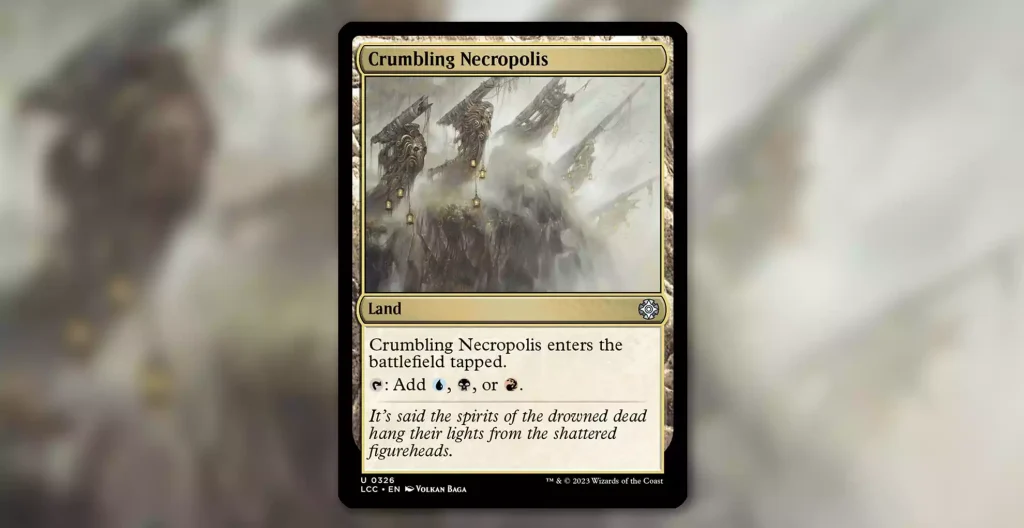
Examples:
- Arcane Sanctum (enters tapped, taps for white/blue/black)
- Nomad Outpost (enters tapped, taps for red/white/black)
3. Panorama Lands
During the Shards of Alara block, Wizards printed a series of lands called Panoramas. These lands tap for colorless mana by default, but they can be sacrificed for one generic mana to search your library for a basic land of one of their associated colors. For instance, Bant Panorama lets you fetch a Forest, Plains, or Island. These aren’t tri lands in the strict sense because they only produce colorless mana themselves. But they fix three colors by fetching one of three possible basic land types.
Panoramas can enter the battlefield untapped, so you can use them for colorless mana right away if you need it. Their ability to fetch a needed color can save you in a pinch, though it costs one generic mana and sacrificing the Panorama. Decks that rely heavily on basic land synergy sometimes use Panoramas as budget fetch lands. While they may not be the only ones you run for color fixing, they can fill that role if you’re missing more expensive fetches.
Examples:
- Bant Panorama
- Naya Panorama
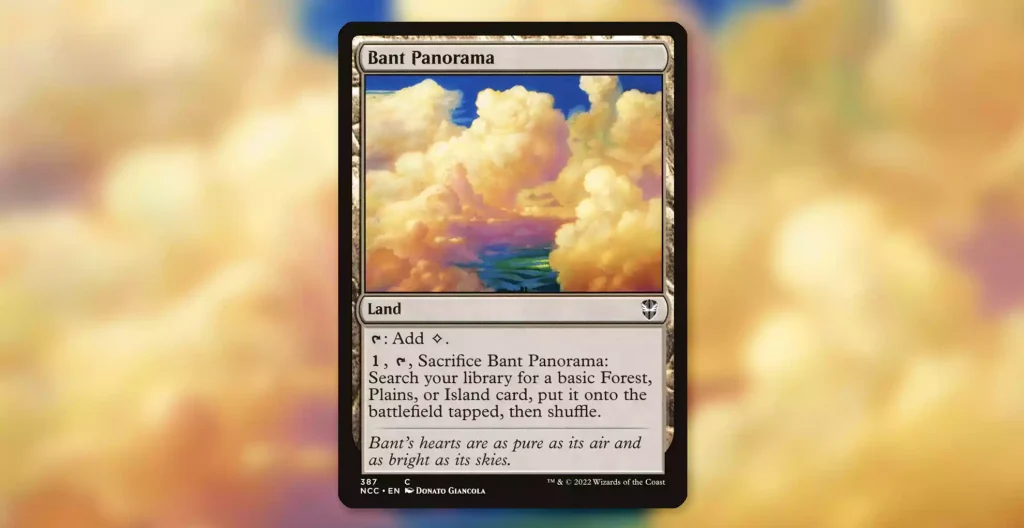
4. Lair Lands
Lair lands, seen in Planeshift, are a bit unique. They tap for three colors of mana, but when they enter the battlefield, you must return a non-Lair land you control to your owner’s hand or sacrifice the Lair. This creates a potential tempo loss because you lose a land drop, but in return you get immediate access to three colors of mana on a single land.
For some deck strategies, especially ones that need to fix colors quickly, Lair lands can be useful. But the downside of returning a land to your hand can slow you down if you’re not careful. You must think about whether you can afford that cost. Still, if you’re playing a deck that absolutely needs that immediate color variety, a Lair land can be the correct choice at the right moment.
Examples:
- Treva’s Ruins (taps for green, white, or blue)
- Darigaaz’s Caldera (taps for black, red, or green)
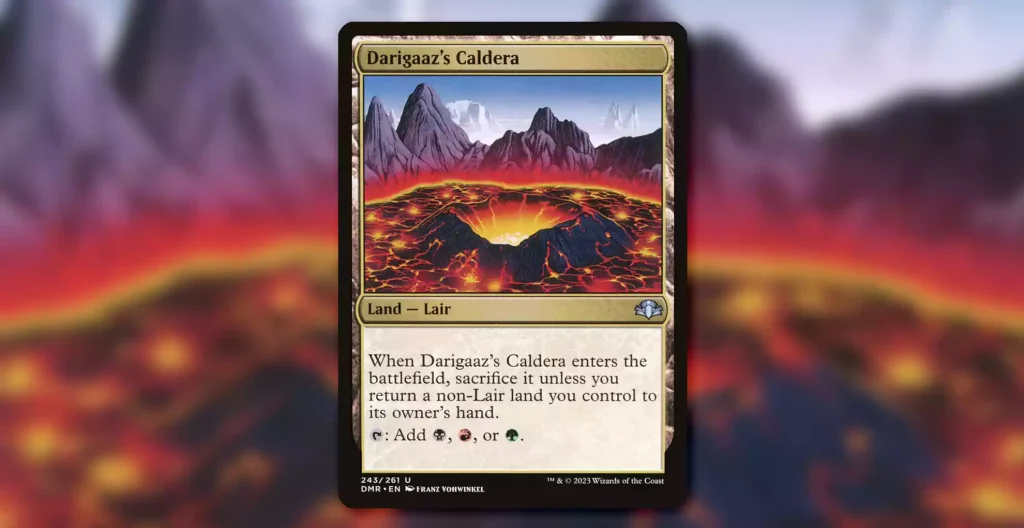
5. Invasion Tri-Lands
In the Invasion set, Wizards introduced a cycle of lands that enter tapped and tap for one color, but they can also be sacrificed to add two mana in allied colors. Ancient Spring, for instance, taps for blue mana but can be sacrificed for white and black mana. Although these cards only produce one color at first glance, they essentially offer a burst of three total colors (the primary color plus two allied colors when sacrificed).
These are not commonly seen in modern Commander or competitive tables, but they hold historical significance. They might show up in certain budget or niche strategies that want immediate mana ramp. The ability to add two mana after a sacrifice can be helpful for a big spell in a critical turn. Just remember once you sacrifice them, you lose the land entirely.
Examples:
- Ancient Spring (enters tapped, taps for blue, can be sacrificed for white/black)
- Sulfur Vent (enters tapped, taps for black, can be sacrificed for blue/red)
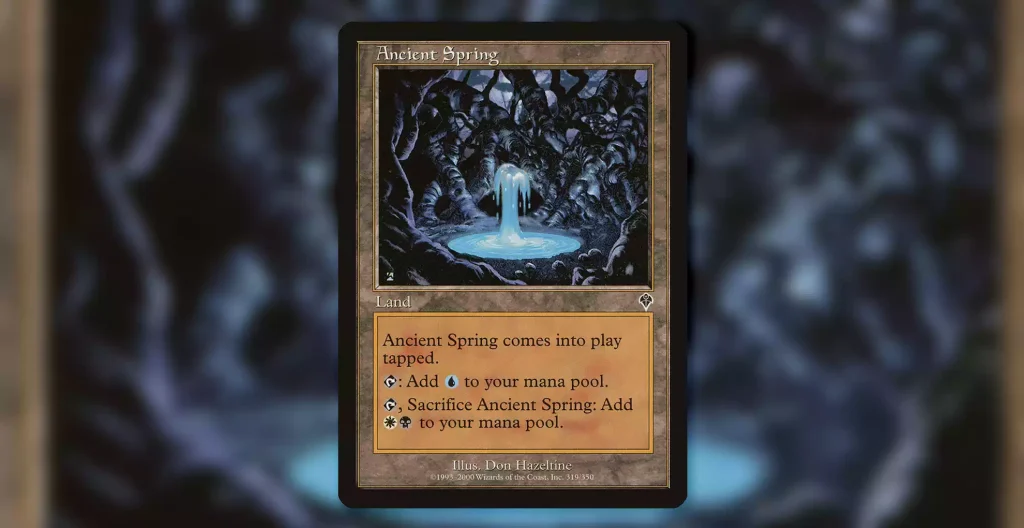
6. Unique Tri-Lands
Some lands don’t fall into any of the big cycles but still offer three colors. For example, Murmuring Bosk is a Forest that can tap for green, white, or black mana, but tapping it for white or black deals 1 damage to you. This card is powerful because it has the Forest type, making it fetchable with many spells that say “search your library for a Forest.” Another example is Tournament Grounds from Throne of Eldraine, which taps for red, white, or black mana but can only be used for Knight or Equipment spells (or colorless costs). It’s narrower than the others, but it still gives access to three colors in the right deck.
These unique tri lands might be overshadowed by more flexible options, but they have strong roles in certain strategies. Murmuring Bosk, for example, pairs nicely with fetch lands that look for a Forest, while Tournament Grounds is perfect in decks heavily centered on Knights. Don’t overlook these if your deck fits their theme.
Strategic Considerations for Tri Lands
Mana Fixing
Mana fixing is the main reason to use tri lands. If your deck wants to cast spells with complex color requirements, tri lands help you get the right symbols on time. For example, if you play a deck that includes black, white, and red spells, a land like Nomad Outpost is a good solution. The more colors you have, the more these lands become valuable. Many Commander players run tri lands because, in a format where you can play a bunch of different colors, you want every possible way to fix your mana.
Tempo Considerations
A common downside of tri lands is that many of them enter tapped. This means you don’t get to use that land for mana the turn it comes down. Playing a land that enters tapped can slow you down. But in a longer game—like those often found in Commander—you might prefer stable mana over immediate speed. Lair lands offset this by providing immediate color variety, but they force you to return another land to your hand. Always weigh the tempo cost against the mana fixing benefit when deciding which tri lands are best for your strategy.
Fetchability
Triomes are attractive because they have basic land types (like Forest, Plains, or Island). That means you can fetch them with fetch lands such as Polluted Delta or Windswept Heath. Fetching a Triome on turn one can fix your colors for most of the game. This synergy with fetch lands is a crucial point. Although Triomes enter tapped, you still get great value by pulling them straight from your deck. Plus, if you draw a Triome later when you don’t need it, you can cycle it away for three generic mana to draw a card.
Cycling Ability
Only Triomes among tri lands have cycling. This ability becomes handy if you draw too many lands. Instead of being stuck, you can pay three generic mana, discard the Triome, and draw a new card. This helps smooth out your draws in the mid to late game. It’s one of the reasons Triomes hold a higher price tag on the secondary market. They offer multiple benefits: three-color mana, basic land types, and a fallback plan when you’re flooded with lands.
Notable Tri Lands
Below are a few tri lands that frequently show up in decks across different formats:
- Ketria Triome: A Triome with Forest, Island, and Mountain. It taps for green, blue, or red and can be fetched or cycled.
- Raffine’s Tower: A Triome with Plains, Island, and Swamp. Perfect for Esper color decks.
- Arcane Sanctum: An original tri-land from Shards of Alara. It enters tapped, producing white, blue, or black mana.
- Nomad Outpost: Another original tri-land from Khans of Tarkir, tapping for red, white, or black.
- Murmuring Bosk: A unique Forest that taps for green, white, or black, but costs 1 life if you choose white or black.
These cards are just a sampling. There are more tri lands across different sets. If you’re looking to expand your mana base for a new deck, it’s worth checking a website that aggregates card prices to see which tri lands fit your budget. You might find a cheaper alternative to Triomes if cost is a concern.
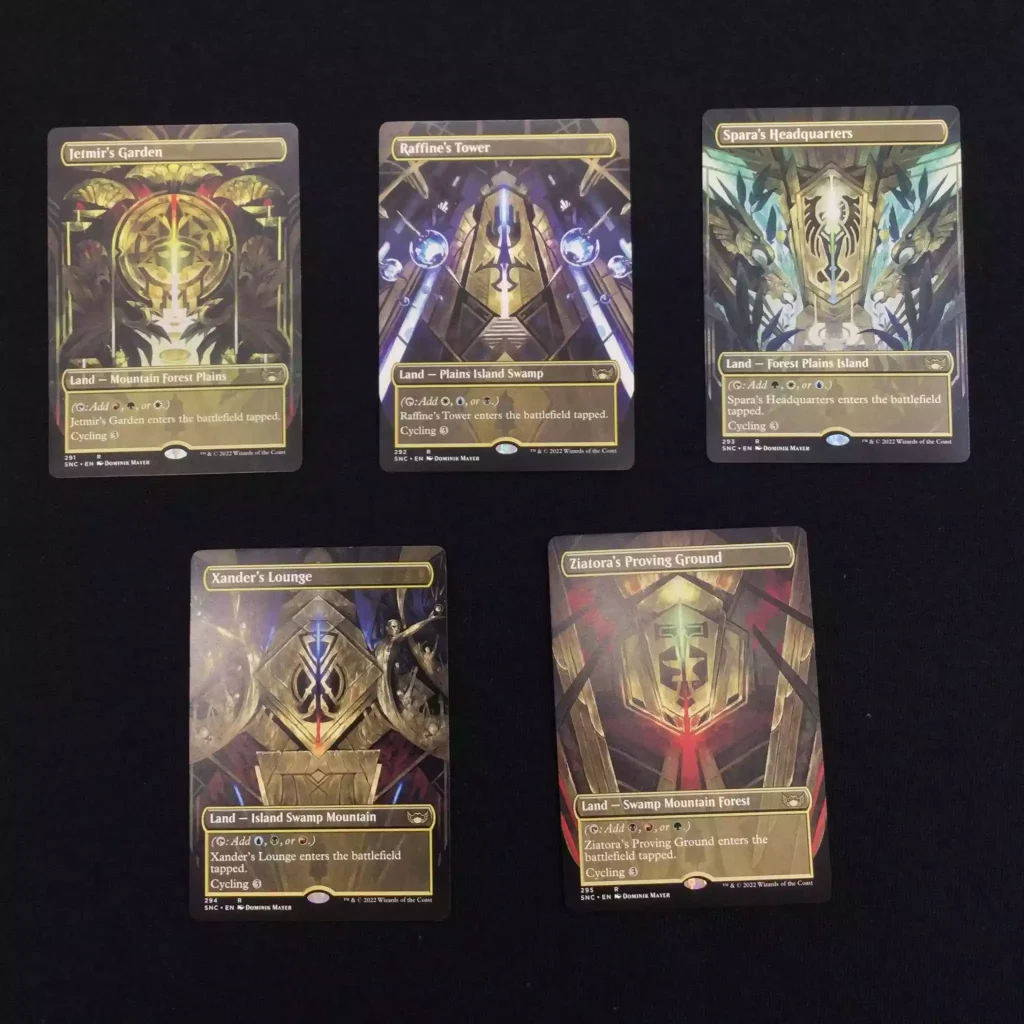
Building a Mana Base with Tri Lands
When building a mana base, consider mixing tri lands with other fixers like shock lands, fetch lands, and basic lands. Basic lands remain crucial for avoiding effects that punish nonbasic lands. Shock lands (like Blood Crypt) and fetch lands (like Scalding Tarn) also contribute to consistent mana, though they can come with a life cost. The key is balancing the number of lands that enter tapped with those that enter untapped. You don’t want to end up with an opening hand full of tapped lands and be unable to play anything for several turns.
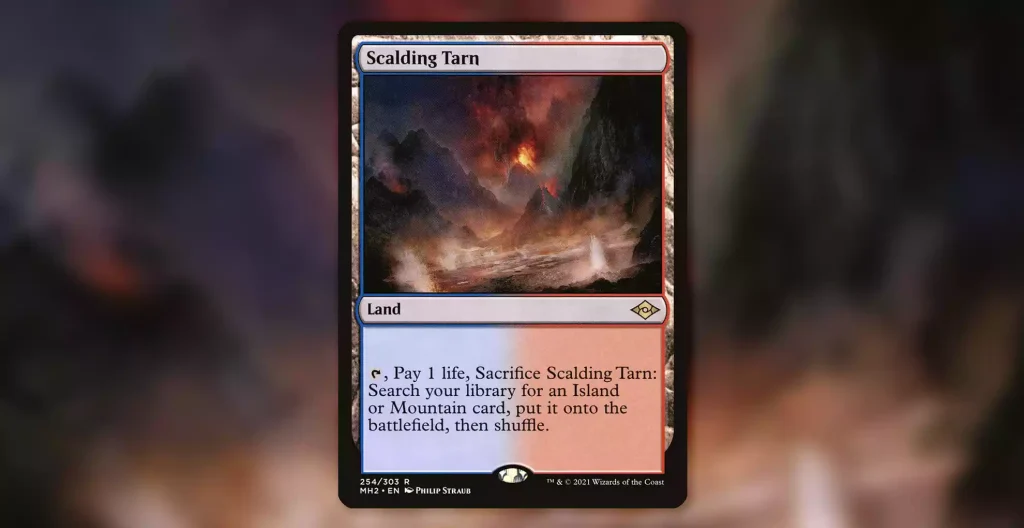
In formats like Commander, where games tend to last longer, tri lands usually pay off in the long run. In more competitive settings with lots of fast decks, you’ll need to evaluate how many tapped lands you can afford to play. If tempo is important, you might include fewer tri lands or consider faster options. You can also look to certain future sets—like expansions reminiscent of Modern Horizons—that might print or reprint new tri land variants.
Downsides and Trade-Offs
Most tri lands enter the battlefield tapped. That’s a big downside if your deck needs to hit the ground running. If your format is full of fast aggro decks, having multiple lands that enter tapped can cost you games. Another downside is that some tri lands, like Lair lands, require you to return a land to your hand. That slows your development. And in the case of Invasion tri-lands, you might only get full value by sacrificing them, losing a potential land drop in the process.
Despite these trade-offs, tri lands remain one of the best ways to fix your mana across three colors. They’re especially appealing in decks that aren’t trying to win on turn four but want a stable long game. If you have no trouble with slower starts, tri lands become an excellent tool in your mana base.
Commander, Five-Color Decks, and More
Tri lands are especially valuable in Commander, where three- to five-color decks are common. Cards like Kenrith, the Returned King or The Ur-Dragon demand multiple colors of mana. Tri lands make it easier to pay for spells that cost two or three different colors at once. In a five-color deck, you might even run multiple sets of tri lands, plus fetch lands to grab your Triomes. Because the format is slower, playing a land that enters tapped is typically acceptable.
Commander players often look for lands that offer a lot of colors without demanding too many extra steps. Tri lands help them fill that need. If you want to play a bunch of color-intensive spells—like those with symbols for all five colors—having tri lands that produce multiple colors is crucial. And if your strategy calls for land-based combos or synergy, you can consider Triomes for their basic land types or Lair lands for immediate mana variety.
Purchasing and Availability
Many tri lands are affordable, but some—especially Triomes—can be pricey. If you’re budget-conscious, you might look to original tri-lands from Shards of Alara or Khans of Tarkir, or picking up a set of our Triome proxies. They remain a solid choice for three-color decks if you don’t mind them entering tapped. Panorama lands are another budget-friendly option, as they offer partial tri-color fixing by fetching basics. They can also be used in combination with the basic land types you already play.
If you’re unsure which tri lands to add, visit a card database or aggregator website to compare prices and availability. Keep an eye out for reprints, as Wizards sometimes includes tri lands in supplemental products or new sets. Each reprint can lower the cost and make these lands more accessible to everyone.
Conclusion
Tri lands in MTG are a cornerstone of mana fixing for decks that want to run multiple colors. They help you produce three colors of mana from one card, though most of them come with downsides like entering tapped or forcing you to return another land to your hand. From classic Lair lands of Planeshift to the newer Triomes that arrived in Ikoria and Streets of New Capenna, there’s a tri land for almost every strategy.
Whether you’re playing casual Commander at the kitchen table or competing in a local tournament, tri lands can offer strong value. They help you avoid color screw and let you focus on casting the powerful spells you’ve included in your deck. We recommend that you try different combinations of tri lands, fetch lands, and basics to find what works best for your playstyle. By balancing the tempo cost and the color consistency they provide, you’ll discover that tri lands often become some of the most reliable cards in your entire mana base.
Thanks for reading, and good luck exploring all the tri-color options Magic: The Gathering has to offer!

